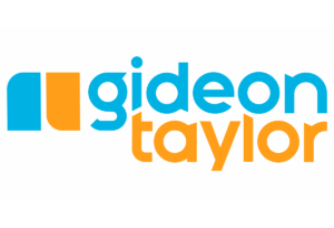OUHSC Eliminates Complexity with Custom PeopleSoft Solutions
If a single word could be used to describe the rigorous process required to complete, enter, process, review, and approve or reject higher education grant requests, it might be the word “complicated.” A story that Kevin Fitzgerald, Assistant VP for Strategic Initiatives at The University of Oklahoma‘s Health Science Center recently shared with us illustrates just how complex the grant application and approval process really is.
“One of my first jobs for the Oklahoma University Sciences Center was to implement a system that would automate some of the processes used by our Institutional Review Board,” Kevin recalled. “IRB members were literally using grocery store shopping carts to bring the hundreds of pages of required documentation to their review meetings.” Can you imagine? Over the past 15 years, Kevin and his team have worked tirelessly to update and automate much of the grant application process within PeopleSoft. The good news? No more shopping carts! However, during those 15 years they’ve also learned that finding a single partner that could provide better integration of multiple systems was very difficult.
Despite these and other challenges, Kevin and his team recently implemented SoonerTrack II as their authorized system for managing grant proposals. According to the HSC website, “SoonerTrack is an enterprise system designed to facilitate the electronic routing and management of Agreements and Grant proposals.” Sooner Track II is a custom workflow-enabled solution built in PeopleSoft using GT eForms and was developed in partnership with Gideon Taylor, a leader in helping organizations design and implement custom solutions in PeopleSoft and other enterprise-class environments.
OUHSC’s journey from shopping carts to implementing SoonerTrack II is a story of setbacks and dogged persistence. Kevin and his team held to their objective of building a solution that would be more efficient, easier to manage, and reduce or even eliminate costly data entry mistakes. “The tolerance for errors in the grant approval process is of necessity extremely low,” Kevin said. “Before we built SoonerTrack II, we had to work around the limitations of multiple software platforms which often didn’t work well together. These disparate systems decreased transparency and were anything but optimal.”
Another reason a new, integrated tracking solution was so needed was because of the disparate types of data involved in the grant review and approval process. According to Kevin there are at least four types of research data they manage:
- Financial Data. When requesting funding for a research project, there are very specific rules that must be followed by the sponsor of the project and the requesting institution. This is true both before and after funding has been approved. Every step of this process must be tracked and stored somewhere secure while also being readily accessible by the IRB.
- Regulatory Review Data. This is the data relating to the various boards and committees that oversee research protocols to ensure they are safe and effective. Because many of these research projects involve human participants, both safety and treatment efficacy are paramount. Kevin shared an example of a member of the IRB who voted against an application because he didn’t believe it was worthwhile even though it had been found to be safe. All the data being tracked for regulatory review must follow precise and rigorous standards.
- Compliance Data. Not surprisingly, grant proposals are subject to an enormous number of laws, regulations, policies, and enforcement entities, and applicants must ensure that standards are met without exception. This in turn means that every aspect of compliance must be closely tracked throughout the grant request process.
- Research Data. This is the data gathered during clinical trials, including how patients respond to interventions, which in turn generates significant volumes of data that must be analyzed to discover trends and correlations indicating whether a drug has an acceptable level of efficacy.
One of the exciting innovations that OUHSC and Gideon Taylor developed was much more in-depth reporting and tracking performance. An example of this was the ability to see and report metadata metrics measuring turnaround time for various grant application processes. That provided Kevin and his team with important, actionable insights that enhanced their ability to make any needed adjustments in their method of operations.
Levels of Complexity
Building a solution that meets the requirements of sponsors and institutions was a daunting task for OUHSC and Gideon Taylor, to say the least. According to Lynette Chaudoin, Solution Architect at Gideon Taylor, “Integrating all the different platforms OUHSC used was just the beginning step on this project. We also wanted to provide every user a more transparent and intuitive experience at whatever stage of the grant application and approval process they were in. That was no small feat given how complex this was.” Additionally, conflicts of interest (e.g., a researcher working on a project sponsored by DuPont who also owns DuPont stock) also require full disclosure and documentation. Yet one more reason a single solution was required.
All of this reinforces the point that successfully managing the grant application and approval process was a remarkably difficult endeavor for OUHSC. Kevin mentioned a pattern he has observed over the years which is likely found in other organizations as well.
- Multiple companies have promised a one-stop solution and higher ed organizations migrate to that solution.
- The one-stop solutions contain an assortment of modules that support the variety of research business processes, but some modules work well, some do not work well, and others cannot perform the desired business process at all
- The one-stop solutions are advertised as being ready for integration so that business data automatically flows from one system to another. The reality is that integrations must be manually created, and workarounds must be put in place.
- Having a system that is embedded in PeopleSoft using Gideon Taylor technology enabled OUHSC to have a higher level of integration between the research financial proposal data and the organizations business data than had ever been achieved previously.
- They had initially tried running everything through PeopleSoft, but because it didn’t currently offer the customization they were looking for, they bought or customized the other solution.
- Sometime after this, PeopleSoft released those same features but for whatever reason, they weren’t widely adopted.
- Several years pass and users realize they’re not using the new solution as intended.
- They return to PeopleSoft to see if it now provides the solutions and benefits they were looking for.
In one of their trips through this cycle, OUHSC considered a grants management software package, but found it to be dauntingly complex. One of their most highly trained and experienced team members was sent to the vendor’s intensive training course to master the software; but the training left the team member feeling even less confident about managing the complexities of the solution.
Grants management administrators and subject matter experts continue to struggle to find solutions that are both full-featured and manageably intuitive.
SoonerTrack II
Clearly, something better was needed. But with so many stake holders, was it possible to develop a solution that met all OUHSC’s demanding grant process requirements? Remarkably, yes.
Here are some of the key improvements that OUHSC and Gideon Taylor designed in SoonerTrack II. All of these (and many more) were built with two important objectives: A better user experience and improving the results of the grant application process.
- Gideon Taylor is the leader in building and implementing custom workflow-enabled solutions in PeopleSoft using GT eForms. Gideon Taylor worked closely with OUHSC to create forms that were intuitive, efficient, and accurate. Best of all, creating new forms is self-service. No analysts or developers required!
- They integrated the pre-award system into PeopleSoft Financial, eliminating data entry duplication and the need to make multiple edits if an award is for a different amount than what was requested.
- Developed a “robot” that automatically searches an application to ensure that all conflict-of-interest forms have been completed before an application can move forward.
- Reduced the average turnaround time for a submission from 12 months or more to just a few months or less. Even when accounting for required legal reviews, Kevin affirmed that SoonerTrack II is far more efficient and effective than their previous process. This is especially important, Kevin shared, because “it’s all about bringing in more research dollars, and that has everything to do with the quality of the applications we submit. Becoming more efficient at the very least will enable us to submit more applications than we could before and at a much higher level of quality.”
- The quality and robustness of the SoonerTrack II’s query functionality has helped OUHSC identify previously unknown grant options that they are just beginning to explore.
- Because of the very disciplined development process followed by Gideon Taylor, SoonerTrack II was built at a fraction of the cost other vendors would’ve required. “We’ve worked with another group of consultants that also do a great job but who are also quite expensive in comparison to Gideon Taylor,” Kevin added. “GT provided the same experience for us but at a much lower cost.”
Without question, the higher ed grant application and award process remains a very complicated one. But for OUHSC, much of that complexity is now managed by a custom solution built to their exact specifications, resulting in a much better user experience and outcome while significantly reducing the cost and time required to apply for grants.
As for their collaboration with Gideon Taylor, here’s what Kevin had to say.
“I highly recommend that anyone in a situation like ours ask GT what they can do for you from at least two different angles – they know the most effective ways to leverage existing PeopleSoft technology, and they also bring many years of expertise in optimizing complicated workflows and processes that you just can’t do with the native PeopleSoft tools, saving both time and money. They are truly a great partner.”
If your organization is ready to explore ways you can improve accuracy and efficiency in the higher ed grant approval process, we’d love to help. Simply fill out this request form, call us at 801-434-7260, or send us an email to hello@gideontaylor.com to schedule a time to discuss your current process.







